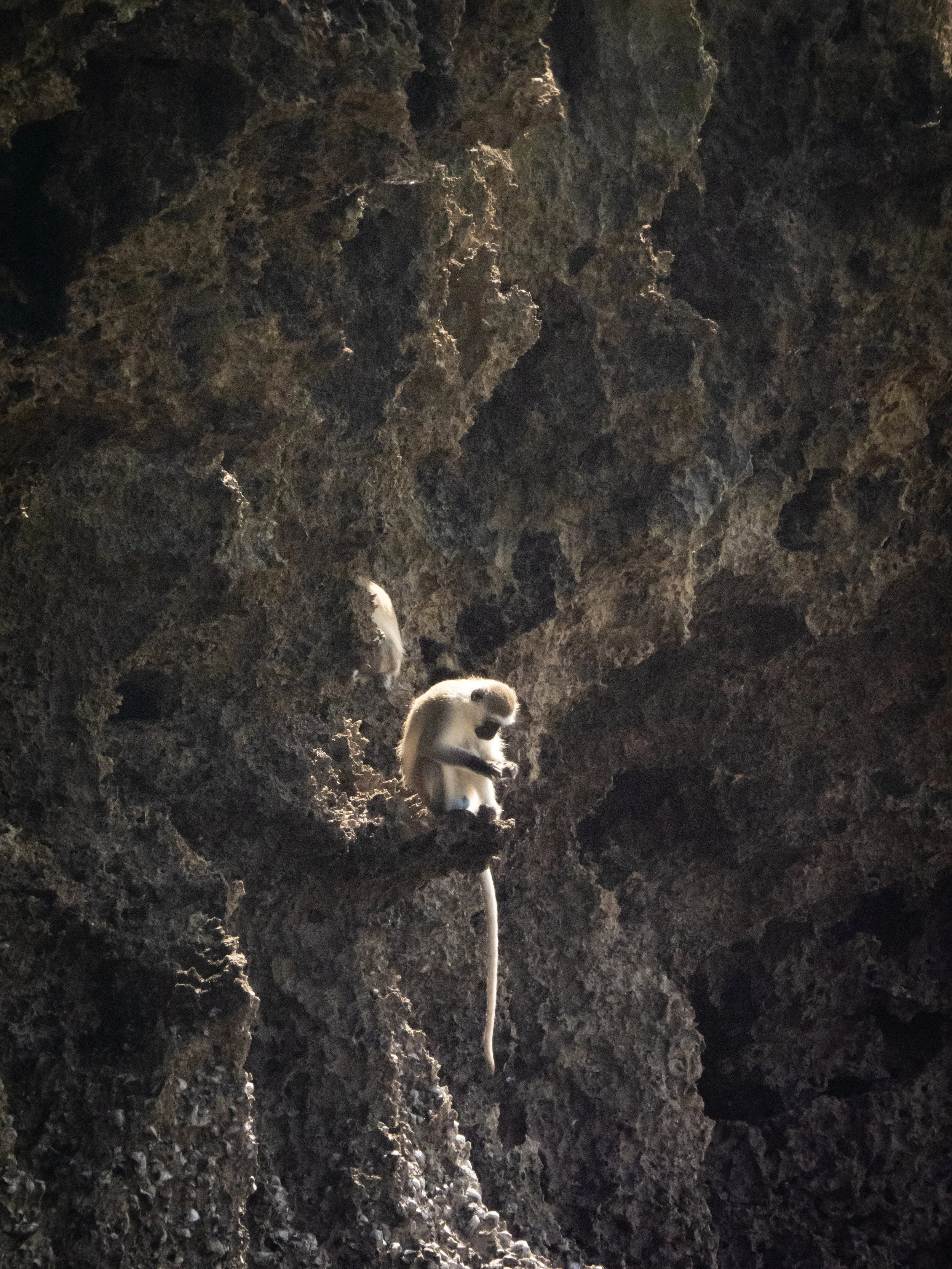Updates From the Field on Kiwayu Island
By Safina Center Fellow Alex Chege
An adult vervet male sits on an intertidal outcrop while manipulating a just caught marine crab. ©Alex Chege
Greetings from the field! I've spent just about 11 days here on Kiwayu Island, my research site nestled in Kenya's northeastern Lamu Archipelago. Fortunately for myself—a predominantly terrestrial behavioral ecologist—the sea has been still both traveling here onto the island and navigating our way by foot and by boat to its southern tip that juts far off the mainland. After what has been a seemingly long wet season here, we're slowly coming to the end of Kusi (the cold, windy, and wet season) as the East African coast welcomes Matalai (the transition between seasons) and later, Kaskazi (the hot, still and dry season) when the sea becomes more favorable for safe travel and abundant fishing.
Closer to the village, the occasional calls of donkeys braying seem to be drowned out by continuous hammering and shouting as Kiwayu's inhabitants and laborers from all around Kenya work tirelessly to set the foundation for the island's first seawall and jetty. Elsewhere, pockets of the island echo similar sounds of activity as new and recently restored eco-camps begin to dot the landscape eagerly awaiting new visitors in August.
Construction of Kiwayu Iskand’s first seawall and jetty. One of many county development projects happening in Lamu. ©Alex Chege
With only the occasional showers on the island, the wilderness areas are still and rather quiet, with even fewer fisherman than usual casting their nets in the intertidal areas, many having travelled to Lamu Island for the season or laboring in the village. Somewhat escaping the rattle of development, a few of the island's resident troops of vervet monkeys seem to be ranging further south. Carrying out their usual daily activities of foraging, fewer nearby fisherman could mean these groups now have the space to forage freely on marine crabs and seaweed found in intertidal areas. This makes my job of studying their foraging behavior somewhat easier, as fewer people may make them less weary of venturing into the open.
Lone fishermen make their way back to shore after an afternoon of fishing. ©Alex Chege
This field season, I am collecting data establishing if vervet populations that forage near the coast rely more (or less) on marine foods depending on the season. More generally, I'm interested to know the extent to which primates rely on marine-derived food resources while living in and occupying such habitats. Because primate populations that inhabit coastal areas are scarce and potentially threatened from rapid development, understanding how their behavior varies with local phenology and their vicinity to humans and human infrastructure is important to advise future conservation efforts. And so, over the next 6 weeks, I’m collecting behavioral records, habitat data, and conducting outreach initiatives around the island.
An adult vervet male sits on an intertidal outcrop while manipulating a just caught marine crab. ©Alex Chege
That's it from me! I'm excited to share more updates and photos when I'm back to a stable internet connection. Best wishes to all, and a happy Summer and Kusi from Kiwayu Island.




